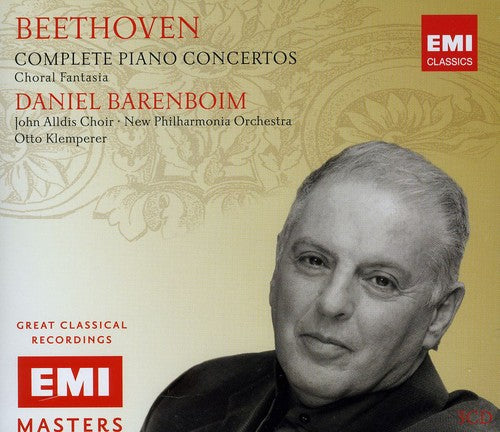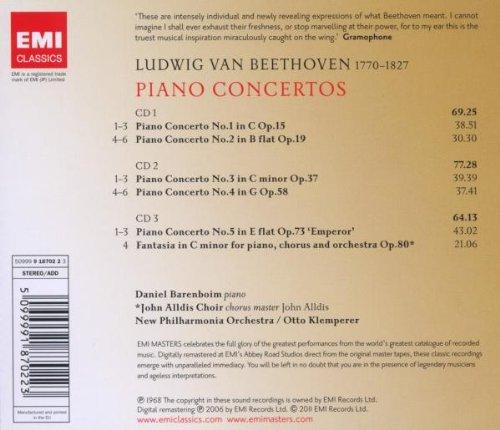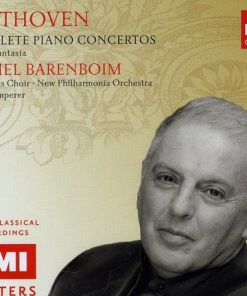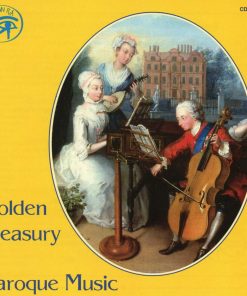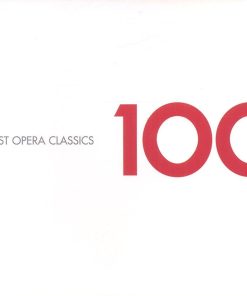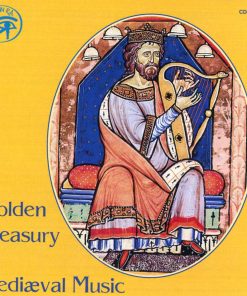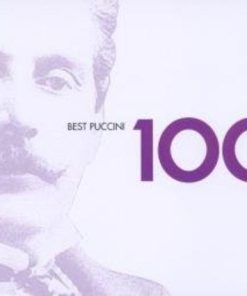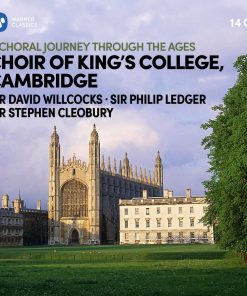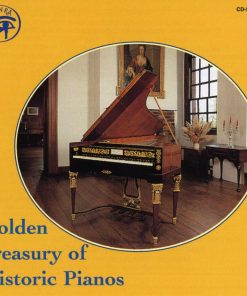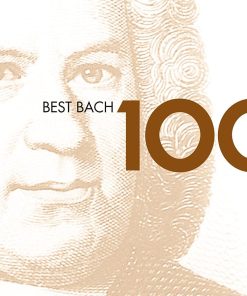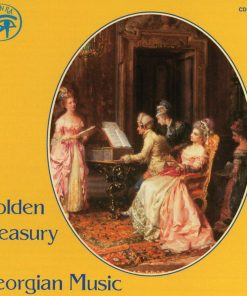BEETHOVEN: COMPLETE PIANO CONCERTOS – NEW PHILHARMONIA, BARENBOIM, KLEMPERER (3 CDS) WARNER CLASSICS
$ 44,99 $ 26,99

Klemperer’s decision to record the piano concertos at the age of 82 came as a result of his admiration for the most precociously talented of all young Beethoven pianists at the time, Daniel Barenboim. Barenboim was 25 and about to embark on what was to be an exceptionally fine cycle of the Beethoven piano sonatas.
He was steeped in Beethoven and perhaps peculiarly well suited to the concertos which, we should not forget, are essentially a young man’s music. It was a fascinating pairing, Klemperer and Barenboim contrasted in age and to some extent in temperament but at the same time symbiotically at one musically. Had this not been the case, Barenboim would have been swamped, lost in the wash of Klemperer’s accompaniments which deliver the orchestral argument and the orchestral detail with an articulacy and authority unique in the history of these works on record.
The performance of the B flat Concerto, the first historically if not numerically, is a typical joy, full of fire and grace and unstoppably vital.
Given Klemperer’s propensity for taking slow tempos in Beethoven, you might imagine him being taken for a ride by the young Barenboim in the B flat and C major finales. But not a bit of it. It’s Klemperer, as much as his youthful soloist, who seems to be the driving force here.
Rarely on record has the slow movement of the C major Concerto been played with so natural a sense of concentrated calm, the whole thing profoundly collected on the spiritual plane. One of the joys of the Barenboim/Klemperer cycle is its occasional unpredictability: rock-solid readings that none the less incorporate a sense of ‘today we try it this way’.
Ensemble is mostly first rate during the cycle.
The tricky coda of the first movement of the C minor Concerto is both rapt and dramatic.
But in the coda of the first movement of the G major there’s little doubt that Klemperer drags the pulse. And elsewhere there are some occasionally awkward adjustments to be made between soloist and orchestra. At the time of its initial appearance, the Emperor performance was generally adjudged a success. Again it’s broadly conceived. At first the finale seems a little staid; but later the 6/8 rhythms are made to dance and the performance has a burning energy by the end. So does the account of the Choral Fantasia.
Given Klemperer’s magisterial style and authority, this set could have emerged as five symphonies with piano obbligato. In fact, it’s a set of rare authority and spontaneity, and given the slightly unconventional idea of the soloist as primus inter pares, it’s probably unique.â€
Beethoven:
Piano Concerto No. 1 in C major, Op. 15
Piano Concerto No. 2 in B flat major, Op. 19
Piano Concerto No. 3 in C minor, Op. 37
Piano Concerto No. 4 in G major, Op. 58
Piano Concerto No. 5 in E flat major, Op. 73 ‘Emperor’
Fantasia for Piano, Chorus and Orchestra in C minor, Op. 80
Daniel Barenboim (piano)
New Philharmonia Orchestra, Otto Klemperer
Fast Shipping and Professional Packing
Due to our longstanding partnership with UPS FedEx DHL and other leading international carriers, we are able to provide a range of shipping options. Our warehouse staff are highly trained to pack your goods exactly according to the specifications that we supply. Your goods will undergo a thorough examination and will be safely packaged prior to being sent out. Everyday we deliver hundreds of packages to our customers from all over the world. This is an indication of our dedication to being the largest online retailer worldwide. Warehouses and distribution centers can be located in Europe as well as the USA.
Orders with more than 1 item are assigned processing periods for each item.
Before shipment, all ordered products will be thoroughly inspected. Today, most orders will be shipped within 48 hours. The estimated delivery time is between 3-7 days.
Returns
The stock is constantly changing. It's not entirely managed by us since we are involved with multiple parties such as the factory and our storage. The actual stock can fluctuate at any time. Please understand it may happen that your order will be out of stock when the order is placed.
Our policy is valid for 30 days. If you haven't received your product within 30 days, we're not able to issue either a return or exchange.
You are able to return a product if it is unused and in the same condition when you received it. It must also still remain in the original packaging.
Related products
MUSIC CDS
MUSIC CDS
MUSIC CDS
MUSIC CDS
MUSIC CDS
MUSIC CDS
MUSIC CDS
MUSIC CDS
MUSIC CDS
MUSIC CDS
